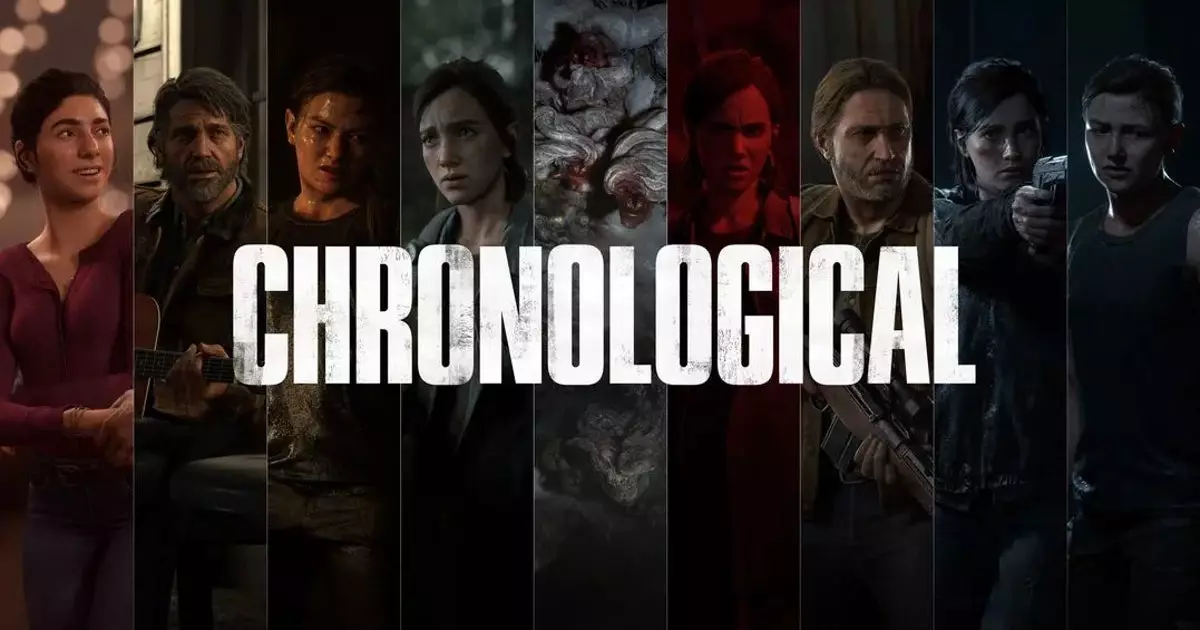Naughty Dog’s latest addition to “The Last of Us Part II” — a mode that allows players to experience the story in chronological order — is undeniably a provocative move. While the studio touts this experiment as a chance for players to see the narrative afresh, it raises fundamental questions about storytelling and artistic intent. The original game’s non-linear structure was intentional, not just stylistically but thematically, emphasizing the fractured, emotional journey of the characters. Flattening this complexity into a linear timeline might seem appealing at first glance, but it risks diluting the emotional resonance crafted through careful narrative dissonance. I find this shift to be a reductive gesture masked as innovation—an oversimplification of a deeply layered story designed to evoke confusion, empathy, and moral ambiguity.
From my perspective, storytelling in interactive media is an art form that thrives on the manipulation of time, perspective, and revelation. Naughty Dog’s decision to impose a one-size-fits-all chronological perspective smacks of a misunderstanding and underappreciation for these techniques. It’s like stepping into a textured painting and then peeling away the layers to see only the finished image, losing all the nuance along the way. While the studio claims that this mode offers “deeper insight,” I contend that it actually strips away the storytelling richness, rendering key moments less impactful because context and emotional buildup are sacrificed in the pursuit of linear clarity.
The Flirtation with Radical Simplicity: Is It a Misstep or a Bold Statement?
This move feels less like a genuine artistic experiment and more like a superficial attempt to cater to players’ curiosity. It’s a classic case of a beloved franchise undermining its own complexity in an effort to appeal to a broader audience. Naughty Dog suggests that experiencing the game linearly allows players to understand Ellie’s progression from a girl strumming a guitar to a survivor haunted by loss—an insight that the original nonlinear format dispersed across multiple timelines. Yet, the notion that simplifying the narrative enhances understanding is overly optimistic. If anything, it risks turning what was once a challenging, emotionally layered journey into a mere chronological exercise—akin to watching a film in order but losing the suspense, surprise, and emotional crescendo that make it compelling.
Furthermore, the studio’s disregard for the game’s original storytelling structure reveals a certain arrogance. The game’s intentionally disrupted chronology was a deliberate design choice, echoing themes of memory, trauma, and moral ambiguity. To unilaterally undo that structure indicates a lack of respect for the narrative’s integrity. It feels as though Naughty Dog is trying to have it both ways—maintaining their reputation for storytelling sophistication while offering players a “new way” that fundamentally alters the experience, perhaps even compromises it.
Marketing Ploys and Cultural Myopia: Dumbing Down for the Masses?
Naughty Dog’s promotion of this new mode and the accompanying features—like the bizarre option to swap Joel and Tommy’s appearances to resemble the Drake brothers—is perplexing. These features seem more like frivolous add-ons than meaningful enhancements. The mention in marketing that the story is “meticulously put together” and that this mode isn’t recommended for newcomers reveals a certain nervousness—perhaps even a hint of condescension—toward players unfamiliar with the game’s intricate structure.
This reveals a troubling attitude toward storytelling in modern gaming: the obsession with spectacle and novelty at the expense of depth. Instead of focusing on creating new, innovative experiences or exploring daring narratives, Naughty Dog appears to be pandering to the entertainment addiction of instant gratification. The idea of “reordering” a storied masterpiece for superficial disruption echoes the worst trends in pop culture—where the value of something is measured solely by novelty rather than quality.
Rather than pushing boundaries, this initiative feels like a tawdry gimmick, designed to generate buzz without regard to whether it genuinely enhances the art form. It’s emblematic of the larger issue in contemporary gaming—where creative experimentation often takes a backseat to marketable features and viral moments. Naughty Dog, once revered for pushing narrative boundaries, now seems content to let its legacy be reconfigured into a superficial novelty.
This bold, almost reckless move to retroactively reorder a complex story underscores a larger problem: the oversimplification of narrative storytelling itself. Instead of trusting players to interpret and engage with layered stories, there’s a tendency to reduce everything to easy-to-follow, linear paths that strip nuance and depth. In doing so, Naughty Dog risks devaluing its own artistic achievements and inviting criticism that they are more concerned with “cool features” than meaningful storytelling. The gamble is telling: either this approach sparks a new appreciation for storytelling’s flexibility or it signals a retreat into bland, unchallenging entertainment. Only time will tell, but I am skeptical that this experiment will serve the legacy of “The Last of Us” well.


Leave a Reply